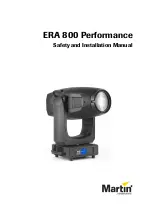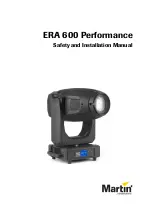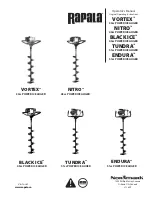
13
SET–UP INSTRUCTIONS
1
Figure 9
1. Lynch pin
INSTALL BALL JOINT AND CONNECT
LIFT CYLINDER
Note: Ball joints are not required for all implements;
refer to implement operator’s manual for requirements.
1.
Thread jam nut fully onto right hand ball joint.
2.
Screw ball joint into right hand push arm until center
of ball joint is 2-3/8 inches (60 mm) away from front of
push arm (Fig.10). Do not tighten jam nut.
WARNING
Since push arms are spring–loaded, a
helper is required to push the arms down
during installation of the ball joints or oth-
er implements. Sudden release of the push
arms could cause injury.
1
2
4
3
Figure 10
1. Jam nut
2. Ball joint mount
3. 2-3/8 in. (60 mm)
4. Right hand push arm
4.
Have a helper push down on the left push arm. Then
insert a 2 x 4 in. (51 x 102 mm) block of wood between
the frame and top of the push arm (Fig. 10). Screw ball
joint into left hand push arm until center of ball joint is
2-3/8 inches (60 mm) away from front of push arm
(Fig.11). Do not tighten jam nut.
1
2
3
4
5
Figure 11
1. Jam nut
2. 2 x 4 in. (51 x 102 mm)
block
3. Left hand push arm
4. Ball joint mount
5. 2-3/8 in. (60 mm)
5.
Carefully remove 2 x 4 in. (51 x 102 mm) block of
wood from between frame and push arm.
6.
Remove spring pin from cylinder pin and slide
cylinder pin out of cylinder.
7.
Raise front of lift arm until hole in movable end of
cylinder lines up with holes in lift arm brackets. Use
caution as lift arm is spring–loaded. Hold parts together
with cylinder pin, spring pin, and cotter pin. Cotter pin
must be to the outside.
8.
Install implement; refer to implement Operator’s
Manual for proper installation procedures.
CHECK TIRE PRESSURE
The tires are over–inflated for shipping. Therefore,
release some of the air to reduce the pressure. Correct
air pressure in the front and rear tires is 21 psi
(145 kPa).
Содержание 30789
Страница 2: ......
Страница 37: ...36 HYDRAULIC SCHEMATIC...















































